Text
History of animation, Richard Williams
Richard Williams was an amazingly talented and uniquely styled animator, most commonly known for being the animation director on roger rabbit for which he won two academy awards and as the director of his unfinished feature film The Thief and the Cobbler.

His process and style are create smooth and detailed movements that really bring his animations to life, he achieves this affect by animating every single frame uniquely, rather than using the common two frame or three frame method which use three identical frames per individual image which is less time consuming and less taxing on the animator, however this creates a less fluid more snappy and rigid animation this is why Richard preferred to do 1 image per frame creating his signature fluid style.
1 note
·
View note
Text
The Artistic Legacy of H.R. Giger in Modern Media
Swiss surrealist artist H.R. Giger stands as a singular force in the art world, leaving an indelible mark with his dark, biomechanical creations. Renowned for his contributions to the visual design of the "Alien" film franchise, Giger's impact extends far beyond the silver screen. In this exploration, we delve into the life, art style, and acclaimed works of the visionary artist whose nightmarish visions have permeated modern media.

1. The Early Years:
Hans Rudolf Giger, born in 1940 in Switzerland, demonstrated an early fascination with the fantastical and the macabre. His early influences included the works of Swiss surrealist painters and the writings of horror author H.P. Lovecraft. Giger's formal art education, including studies at the School of Applied Arts in Zurich, laid the foundation for the development of his unique artistic style.

2. Biomechanical Aesthetics:
Giger's art is characterized by a surreal fusion of organic and mechanical elements, a style often referred to as biomechanical. His nightmarish visions depict surreal landscapes inhabited by otherworldly creatures, blending the grotesque and the erotic. The intricate detailing of his work, marked by skeletal structures and fluid, sinuous forms, creates an unsettling yet captivating aesthetic.

3. The Alien Franchise: Giger's Cinematic Masterpiece
H.R. Giger's most iconic and widely recognized contribution to modern media is his work on the "Alien" film franchise. Ridley Scott's 1979 sci-fi horror masterpiece, "Alien," brought Giger's nightmarish Xenomorph creature to life, earning the artist an Academy Award for Best Achievement in Visual Effects. Giger's designs for the Alien, the spacecraft, and the eerie landscapes set the tone for the franchise and influenced generations of science fiction and horror.

4. Beyond Alien: Giger's Diverse Portfolio
While Giger's association with the Alien franchise is legendary, his artistic prowess extends to various mediums. He created album covers for musicians like Emerson, Lake & Palmer, and Debbie Harry, further showcasing the breadth of his influence across different artistic disciplines. Giger's Necronomicon series, a collection of his detailed and disturbing artwork, also stands as a testament to his ability to evoke visceral reactions through his creations.
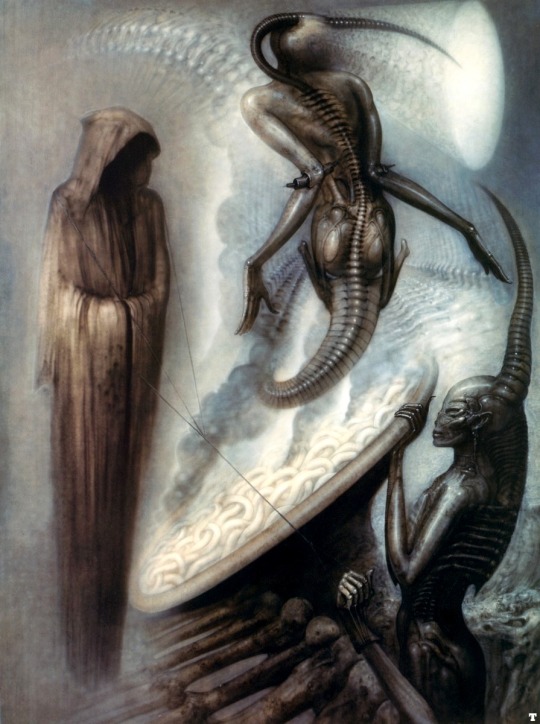
5. Legacy and Influence:
H.R. Giger's impact on modern media and the art world is immeasurable. His biomechanical aesthetic has inspired a multitude of artists, filmmakers, and creators across genres. Giger's influence is evident not only in the realm of science fiction and horror but also in contemporary art, where his dark, surreal visions continue to captivate and challenge perceptions.
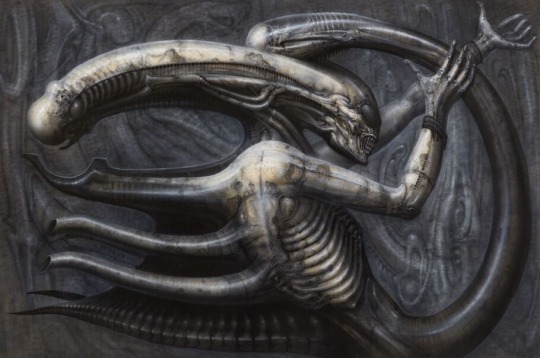
H.R. Giger's artistic legacy, marked by his biomechanical aesthetic and influential contributions to the Alien franchise, has left an enduring imprint on modern media and the broader art world. As we delve into the depths of his nightmarish visions, we find a testament to the power of creativity to transcend boundaries and evoke emotions that linger in the minds of those who dare to explore the dark cosmos of H.R. Giger's imagination.
0 notes
Text
Artistic Alchemy:
Exploring the Works of Aubrey Beardsley and Einar Nermans,
In the realm of art, the late 19th and early 20th centuries witnessed the emergence of groundbreaking talents who pushed the boundaries of creativity. Two such influential figures, Aubrey Beardsley and Einar Nermans, left an indelible mark on the artistic landscape of their time. In this exploration, we delve into the distinct styles and contributions of these artists, each representing a unique facet of the art world.


1. Aubrey Beardsley: A Maestro of Decadence
Aubrey Beardsley, an English illustrator and author, rose to prominence in the late 19th century as a leading figure of the Aesthetic movement and Art Nouveau. Known for his intricate black-and-white illustrations, Beardsley's work often explored themes of decadence, the grotesque, and the sensual. His distinctive style, characterized by bold lines and elaborate ornamentation, left an indelible mark on the art world.

2. Einar Nermans: A Pioneer of Swedish Modernism
Einar Nermans, a Swedish graphic artist and illustrator, made significant contributions to the realm of modernism during the early 20th century. As a prominent figure in the Swedish advertising industry, Nermans played a pivotal role in shaping the visual culture of his time. His work seamlessly blended elements of modernism, cubism, and constructivism, showcasing a keen eye for design and a commitment to pushing artistic boundaries.

3. Aesthetic Overtones and Symbolism:
Beardsley's illustrations, often associated with the literary works of Oscar Wilde and the Decadent movement, featured elaborate depictions of the human form, mythical creatures, and intricate patterns. Nermans, on the other hand, embraced modernist principles, employing bold geometric shapes and innovative design elements in his advertising and poster work. Both artists, despite differing stylistic approaches, shared a commitment to pushing artistic boundaries and challenging societal norms.

4. Legacy and Influence:
The legacies of Beardsley and Nermans continue to resonate in the contemporary art world. Beardsley's influence is evident in the realms of graphic design, illustration, and even popular culture, with echoes of his aesthetic found in various art movements. Nermans, a trailblazer in Swedish Modernism, laid the groundwork for subsequent generations of graphic designers, leaving an enduring impact on the evolution of visual communication.


Aubrey Beardsley and Einar Nermans, though hailing from different corners of Europe and embodying distinct artistic movements, share a common thread of pushing artistic boundaries and redefining visual aesthetics. As we explore their respective works, we uncover a rich tapestry of creativity that continues to inspire and captivate art enthusiasts, proving that the echoes of their innovation resonate far beyond their own time.

0 notes
Text
The Monster Manual:
Encyclopaedias of art and tales,
One of my favourite things in this world of ours is monster manuals or more specifically any book listing, detailing and depicting creatures, beasts and monsters sometimes with astounding attention capturing lore but other times with blank slates for your mind to fill with your own thoughts and ideas.
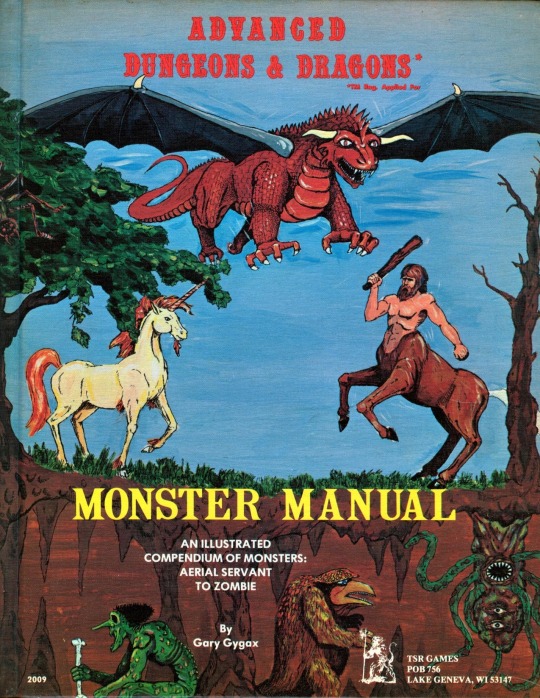
Possibly my earliest introduction to the fascinating world of creature design and lore writing was the 4th edition dungeons and dragons monster manual, I had heard of the the table top game before and had always been curious about its world(s) and what fantastical creatures may live there. I still remember reading through all the pages finding out as much as I could about each creature and how they related to each other and the wider world. It was the feelings and thoughts I had while reading that book that made me start collecting art books and creature compendiums as well as start to get into creature design.

I’m going to list and explain below some pieces of media that utilise creature compendiums and maps well:
Love and Monsters; this film follows Joel Dawson a young man forced underground with the rest of humanity during an event that took place 7 years prior called the monsterpocalypse where every cold blooded animal on the planet to mutate into horrific creatures, some of which are not so horrific in nature, there are journals and maps throughout the film which list and detail the different monsters of the new world and how to avoid or combat them.
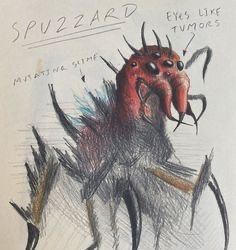
The Spiderwick Chronicles; this films creature compendium is more focal to its plot, the story follows two brothers and a sister’s experiences with the magical world and creatures that border and intersect there new home, the trouble for them starts after one of the twin brothers Jared finds a book called “ a field guide to fantastic creatures” written by someone called Arthur Spiderwick, this book contains many drawings and facets of lore about the magical creatures hidden to most.
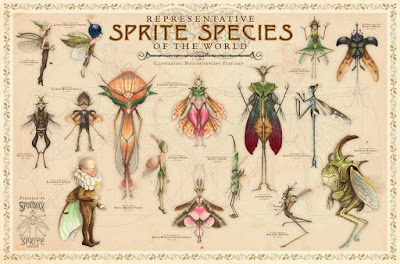
Fantastic beasts and where to find them; an offshoot of the Harry Potter franchise focusing upon the magical creatures of the wizarding world and a rather enthused wizard called newt Scamander all set in the early 20th century, the creature compendium of this film is/was written by its protagonist and had a real world copy which despite my feelings towards JK.Rowling is actually a pretty good book.

0 notes
Text
Unveiling the Mysteries:
Occult Imagery, Symbols, and the Power of Sigils
Throughout history, occult imagery and symbols have fascinated, intrigued, and often sparked controversy. These mysterious elements, deeply rooted in symbolism and esoteric meaning, have been employed by various groups for diverse purposes. In this exploration, we delve into the historical significance of occult symbols, as well as the intriguing world of sigils and seals.
1. Ancient Occult Symbols:
Ancient civilizations, such as the Egyptians and Babylonians, embraced occult symbols as conduits to spiritual realms. The Eye of Horus, an ancient Egyptian symbol representing protection, and the pentagram, with its ties to various cultures, exemplify the enduring power of these ancient symbols in conveying mystical meanings.
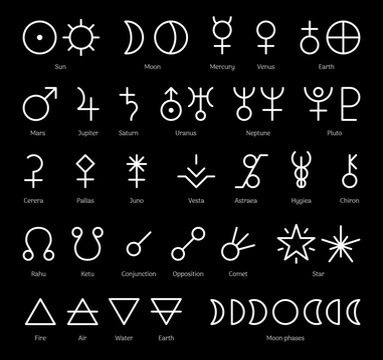
2. Sigils and Seals in Medieval Alchemy:
During the medieval period, alchemists sought to transform base metals into gold and unlock the secrets of immortality. They often used sigils and seals, intricate symbols charged with magical intent, to harness supernatural forces. The philosopher's stone, a legendary alchemical substance, was often depicted through symbolic sigils in pursuit of the mysterious transformation.

3. Hermeticism and the Rosicrucian Order:
Hermeticism, an esoteric tradition rooted in the teachings of Hermes Trismegistus, heavily employed occult symbols, the name comes from the fact that the first books about Hermeticism are said to have been written by the god Hermes Trismegistus ("Thrice-Greatest Hermes"), who combines aspects of the Greek god Hermes and the Egyptian god Thoth. The Rosicrucian Order, a secret society dating back to the 17th century, embraced symbols like the rose and cross to convey profound spiritual truths. These symbols became central to their secretive rituals and teachings.

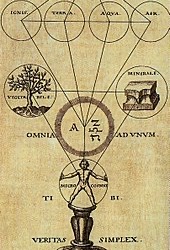

4. The Occult in Modern Secret Societies:
Modern secret societies, including the Freemasons and the Illuminati, have perpetuated the use of occult symbolism. The All-Seeing Eye, often associated with the Illuminati, and Masonic symbols like the square and compass, continue to captivate popular imagination and fuel conspiracy theories.


Occult imagery, symbols, and the intricate world of sigils and seals have woven a rich tapestry throughout history, influencing spiritual practices, secret societies, and cultural perceptions. Whether rooted in ancient civilizations, medieval alchemy, or modern secret societies, these mysterious elements continue to provoke curiosity and fascination. As we explore the hidden meanings behind these symbols, we unravel a fascinating journey through the esoteric realms that have shaped the course of human history.
0 notes
Text
The Art of Cinematic Magic:
Models and Scenic Props in Iconic Films
In the realm of filmmaking, the creation of immersive worlds and breathtaking landscapes relies heavily on the seamless integration of models and scenic props. Several blockbuster films, such as Star Wars, Independence Day, Pacific Rim, and Harry Potter, have mastered the art of using these elements to captivate audiences and bring fantastical universes to life.

1. Star Wars: A Galactic Symphony of Models
The Star Wars saga is renowned for its groundbreaking use of models, particularly in the original trilogy. From the iconic Millennium Falcon to the colossal AT-AT walkers on Hoth, models played a pivotal role in realizing George Lucas's vision. The attention to detail and craftsmanship invested in these models added depth and authenticity to the galaxies far, far away.

2. Independence Day: Extraterrestrial Encounters in Miniature
Roland Emmerich's Independence Day brought destruction on an epic scale, with cities crumbling under alien invasion. The film's visual spectacle was achieved through a combination of practical models and state-of-the-art visual effects. Miniature cityscapes, meticulously crafted and destroyed on set, contributed to the awe-inspiring realism that made the film a sci-fi classic.

3. Pacific Rim: Gigantic Robots and Monstrous Models
Guillermo del Toro's Pacific Rim took the use of models to new heights by integrating practical effects with CGI. Enormous Jaeger robots and colossal Kaiju monsters were brought to life through intricate models, enabling the filmmakers to create awe-inspiring battles that left audiences on the edge of their seats. The tangible nature of the models added weight and scale to the epic clashes.

(Image taken from an arts and practical effects school - https://www.stanwinstonschool.com/ )
4. Harry Potter: Enchanting Realms Through Miniature Magic
The wizarding world of Harry Potter was meticulously crafted, and many of its magical settings were realized using detailed models. From Hogwarts Castle to Diagon Alley, these models served as the foundation for the enchanting landscapes that transported viewers into J.K. Rowling's imagination. The craftsmanship behind these miniatures contributed to the film series' enduring success.

The use of models and scenic props in filmmaking is an art form that continues to evolve, blending traditional craftsmanship with cutting-edge technology. Whether creating distant galaxies, battling giant monsters, or bringing magical realms to life, filmmakers have harnessed the magic of models to immerse audiences in unforgettable cinematic experiences. As we look back at iconic films like Star Wars, Independence Day, Pacific Rim, and Harry Potter, it becomes evident that the artistry behind models and scenic props is an integral part of the cinematic storytelling process, shaping the way we perceive and engage with these timeless tales.
0 notes
Text
H.P Lovecraft, Cosmic Horrors inception:
Howard Phillips Lovecraft, known as H.P. Lovecraft, was a prolific American writer whose legacy transcends time, leaving an indelible mark on the realm of speculative fiction. This blog post delves into the life of Lovecraft, explores some of his most famous works, and examines the profound impact his writings have had on modern culture.
Who was H.P. Lovecraft?
Born on August 20, 1890, in Providence, Rhode Island, H.P. Lovecraft was a master of weird and cosmic horror. Despite facing financial challenges during his lifetime, Lovecraft's literary contributions have earned him posthumous recognition as one of the most influential writers in the horror genre.
Key Works:
1. The Call of Cthulhu (1928): Perhaps Lovecraft's most iconic work, this short story introduces the Great Old One, Cthulhu, an ancient, malevolent cosmic entity. The tale is presented as a series of documents and accounts, emphasizing the horror of the unknown.
2. At the Mountains of Madness (1936): Set in Antarctica, this novella explores the discovery of an ancient, alien city beneath the ice. Lovecraft weaves a narrative that blends scientific curiosity with cosmic dread, showcasing his ability to evoke a sense of awe and terror.
3. The Shadow over Innsmouth (1936): This novella tells the tale of a town with a dark secret and its unsettling inhabitants. Lovecraft's exploration of forbidden knowledge and the consequences of uncovering hidden truths is a recurring theme in this chilling narrative.
Impact on Modern Culture:
1. Cosmic Horror Aesthetic: Lovecraft's works pioneered the subgenre of cosmic horror, emphasizing the insignificance of humanity in the face of ancient, cosmic entities. This theme has influenced a plethora of writers, filmmakers, and artists, shaping the aesthetic of modern horror.
2. The Cthulhu Mythos: Lovecraft's creation of the Cthulhu Mythos, a shared universe populated by cosmic entities and forbidden knowledge, has become a cultural phenomenon. Cthulhu and other beings from Lovecraft's pantheon appear in a wide range of media, from tabletop games to films.
3. Literary Influence: Lovecraft's impact extends beyond the horror genre, influencing writers like Stephen King, Neil Gaiman, and Clive Barker. His themes of existential dread and the unknown continue to resonate in contemporary literature.
4. Pop Culture References: Lovecraftian elements frequently appear in popular culture, from movies like "The Cabin in the Woods" to video games like "Bloodborne." The enduring fascination with the cosmic horror he introduced showcases Lovecraft's lasting cultural significance.
H.P. Lovecraft's literary legacy is one of cosmic horror, forbidden knowledge, and the exploration of humanity's vulnerability in the vastness of the cosmos. His influence on modern culture is immeasurable, with his themes and creations echoing in the works of countless creators across various mediums. Lovecraft's enduring impact ensures that his cosmic horrors continue to captivate and terrify audiences, inviting them to confront the mysteries of the unknown.
0 notes
Text
The Golden Dawn,
In the late 19th and early 20th centuries, a mystical and esoteric movement known as the Hermetic Order of the Golden Dawn emerged, casting a spell of intrigue on those seeking spiritual enlightenment. This blog post delves into the fascinating world of the Golden Dawn, exploring its origins, teachings, and enduring impact on the realms of occultism and Western esoteric traditions.
Origins and Founders:
Founded in 1888, the Hermetic Order of the Golden Dawn was the brainchild of three prominent figures in the occult revival – William Wynn Westcott, Samuel Liddell MacGregor Mathers, and Dr. William Robert Woodman. Drawing inspiration from various esoteric traditions, the Golden Dawn aimed to provide a structured and systematic approach to spiritual development.
Teachings and Practices:
Central to the Golden Dawn's teachings was the pursuit of spiritual knowledge, self-discovery, and the understanding of the mystical aspects of the universe. The order synthesized elements from diverse sources, including Kabbalah, Tarot, astrology, alchemy, and ceremonial magic. Members underwent a series of initiations, progressing through different grades, each revealing deeper layers of esoteric wisdom.
Symbolism and Rituals:
Symbolism played a crucial role in Golden Dawn rituals, with intricate ceremonies designed to invoke spiritual forces and facilitate inner transformation. The use of magical tools, sacred geometry, and correspondences enriched the rituals, creating a unique blend of mysticism and ceremonial magic.
Influence on Occultism:
The Golden Dawn became a catalyst for the spread of occult knowledge, influencing subsequent esoteric and mystical movements. Notable figures such as Aleister Crowley, W.B. Yeats, and Arthur Edward Waite were associated with the Golden Dawn, contributing to its mystique and shaping the landscape of Western occultism.
Internal Strife and Dissolution:
Despite its initial success, internal strife and disagreements among its members led to the eventual dissolution of the Golden Dawn in the early 20th century. Various offshoots and derivative orders emerged, each carrying forward aspects of the original teachings.
The Golden Dawn's legacy endures in contemporary occult practices and esoteric circles. Its influence can be traced in the foundations of modern Western ceremonial magic, tarot divination, and the revival of interest in ancient mysticism.
The Hermetic Order of the Golden Dawn remains a captivating chapter in the history of esotericism, blending mysticism, symbolism, and ceremonial magic. Its impact on the spiritual landscape transcends its temporal existence, leaving an indelible mark on the evolving tapestry of Western occult traditions. As seekers continue to explore the hidden realms of knowledge, the Golden Dawn stands as a beacon, inviting those drawn to the mysteries of the arcane.
5 notes
·
View notes
Text
Cholera in the 19th Century
The 19th century was marked by unprecedented challenges, and one of the most daunting adversaries was cholera. A waterborne disease caused by the Vibrio cholerae bacterium, cholera swept across the globe in multiple pandemics, leaving communities in turmoil. This blog post delves into the impact of cholera during this era and explores the societal and scientific responses that defined this grim chapter in history.
The Cholera Pandemics:
The first wave of cholera emerged in 1817 in the Ganges Delta, quickly spreading along trade routes and reaching distant shores. Subsequent pandemics in the 19th century, including those in 1829-1831 and 1846-1860, caused widespread panic and had a profound impact on populations in Europe, Asia, Africa, and the Americas.
Symptoms and Transmission:
Cholera presented itself with severe symptoms, including profuse diarrhea and dehydration, leading to a high mortality rate if left untreated. The mode of transmission, primarily through contaminated water sources, was not fully understood during this period, contributing to the challenges in containing the outbreaks.
Public Misunderstandings:
The lack of scientific knowledge about microbiology and infectious diseases in the 19th century led to various misconceptions about cholera. Miasma theory, which attributed diseases to "bad air," prevailed, diverting attention from the actual source of the infection. This misunderstanding influenced public health strategies, often to the detriment of effective control measures.
Superstitions and Remedies:
In the face of an invisible and seemingly unstoppable enemy, people turned to superstitions and unconventional remedies. Amulets, charms, and dubious concoctions were embraced in a desperate attempt to ward off cholera. These practices, while rooted in fear, reflected the prevailing uncertainty and anxiety of the time.
Social Impact and Responses:
Cholera outbreaks exacerbated existing social tensions. Stigmatization and scapegoating became prevalent, with marginalized communities often bearing the brunt of blame. The disease laid bare societal fault lines, highlighting the need for coordinated responses and fostering a sense of community resilience.
Advancements in Understanding:
Despite the prevailing confusion, the 19th century laid the foundation for modern epidemiology. Pioneering efforts by researchers like John Snow, who mapped cholera cases and identified contaminated water sources, marked a turning point in understanding and combating infectious diseases.
Legacy and Reflection:
The legacy of cholera in the 19th century is a somber reminder of the challenges faced by communities in an era of limited medical knowledge. Today, as we navigate global health crises, the lessons learned from the struggles against cholera underscore the importance of scientific inquiry, evidence-based approaches, and collective efforts in safeguarding public health.
Cholera in the 19th century was a formidable adversary that tested the resilience of societies worldwide. The pandemics left an indelible mark, shaping not only the trajectory of public health but also the social fabric of communities. Understanding this historical chapter provides valuable insights into the complexities of combating infectious diseases and the importance of informed, collaborative responses.

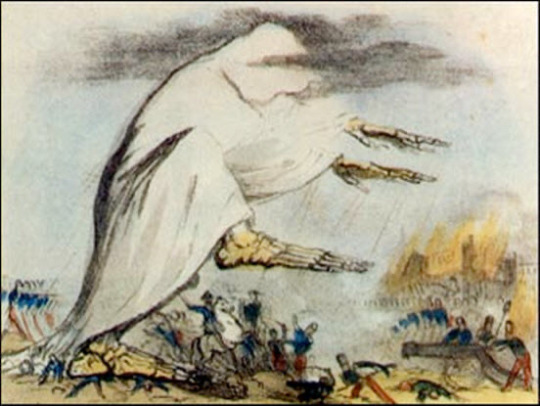
0 notes
Text
Comic panels,
Title: Exploring the Art of Comic Panels: Types, Techniques, and Iconic Examples
Comic panels are the building blocks of the sequential art form, guiding readers through a visual narrative. In this blog post, we’ll delve into the diverse world of comic panels, exploring different types, highlighting famous comics, and examining the unique techniques that make them stand out.
Types of Comic Panels:
1. Standard Panels:
Standard rectangular panels are the bread and butter of comic layout. They provide a structured and easy-to-follow rhythm, allowing for a natural flow of the story.
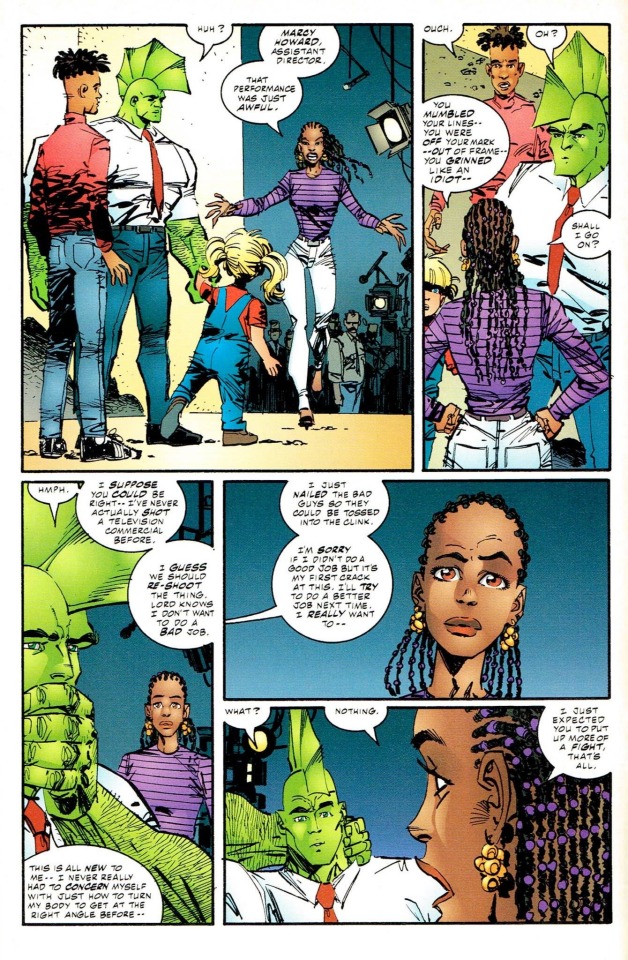
2. Splash Pages:
Splash pages are full-page illustrations designed to captivate readers. They often depict a pivotal moment in the story and are used to create emphasis and impact.
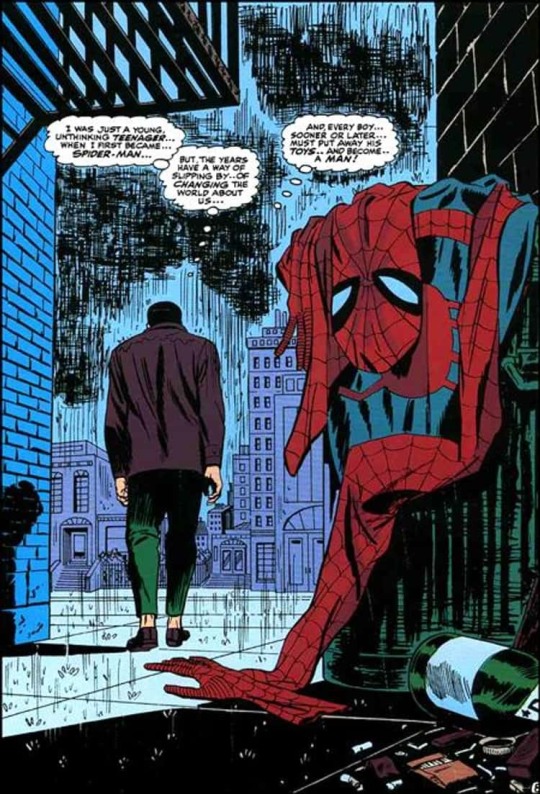
3. Gutters and Gutterspace:
Gutters are the spaces between panels, crucial for pacing and rhythm. They can be narrow or wide, influencing the reader’s perception of time and events.

4. Mosaic Panels:
Mosaic panels use multiple smaller panels to create a larger image. This technique is effective for conveying intricate details or simultaneous actions within a single moment.

Famous Comics and Their Unique Panels:
1. Watchmen by Alan Moore and Dave Gibbons:
Watchmen is renowned for its innovative storytelling and panel design. The nine-panel grid used throughout the series creates a sense of order and meticulous pacing.

2. The Dark Knight Returns by Frank Miller:
Frank Miller’s use of dynamic panel layouts, especially in action sequences, is a defining feature of The Dark Knight Returns. The panels contribute to the intense and cinematic feel of the narrative.
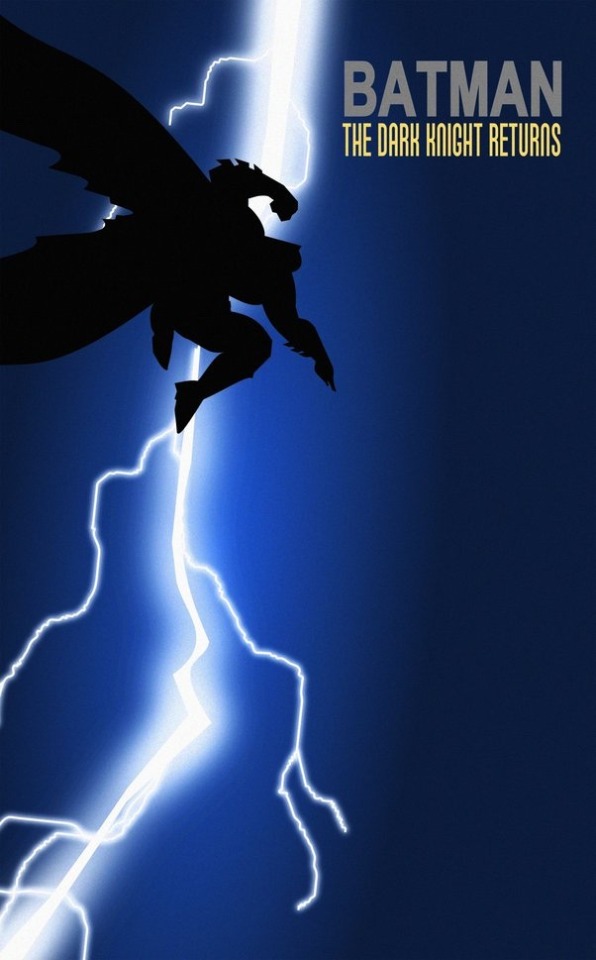
3. Maus by Art Spiegelman:
In Maus, Spiegelman employs a grid format but uses varying panel shapes to distinguish between different timelines and perspectives, adding depth to the storytelling.

4. Sandman by Neil Gaiman:
Sandman showcases the versatility of panel design, with dreamlike sequences that often break free from conventional grids. This fluidity enhances the ethereal nature of the narrative.
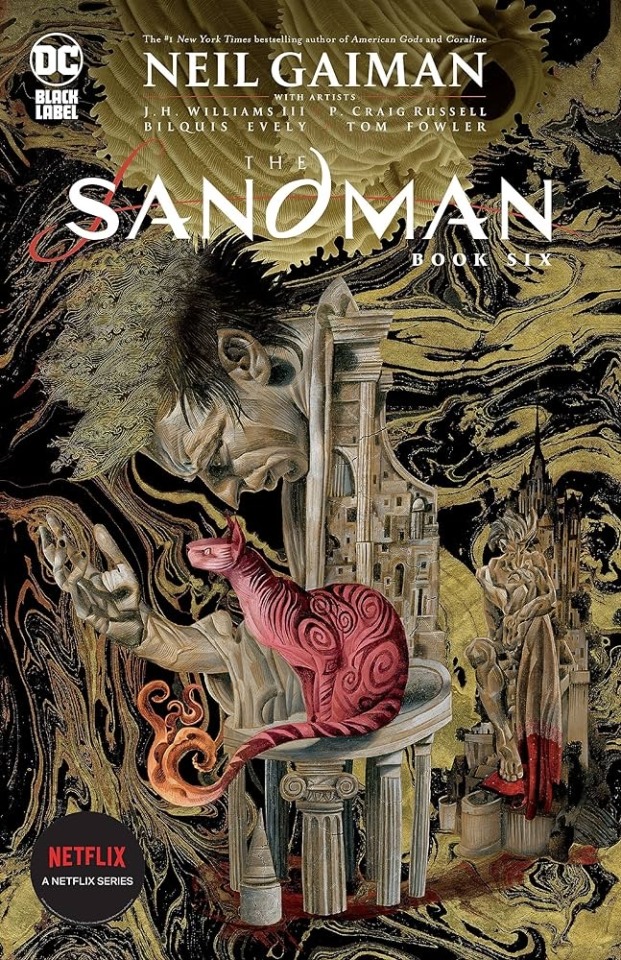
Techniques in Comic Panel Design:
1. Panel Transitions:
Transitions between panels, as defined by Scott McCloud in “Understanding Comics,” can be classified as moment-to-moment, action-to-action, subject-to-subject, and scene-to-scene, each influencing the pacing and focus of the story.

2. Breaking the Fourth Wall:
Some comics, like Deadpool, use panel-breaking techniques where characters acknowledge the reader. This creates a unique interaction and blurs the lines between fiction and reality.
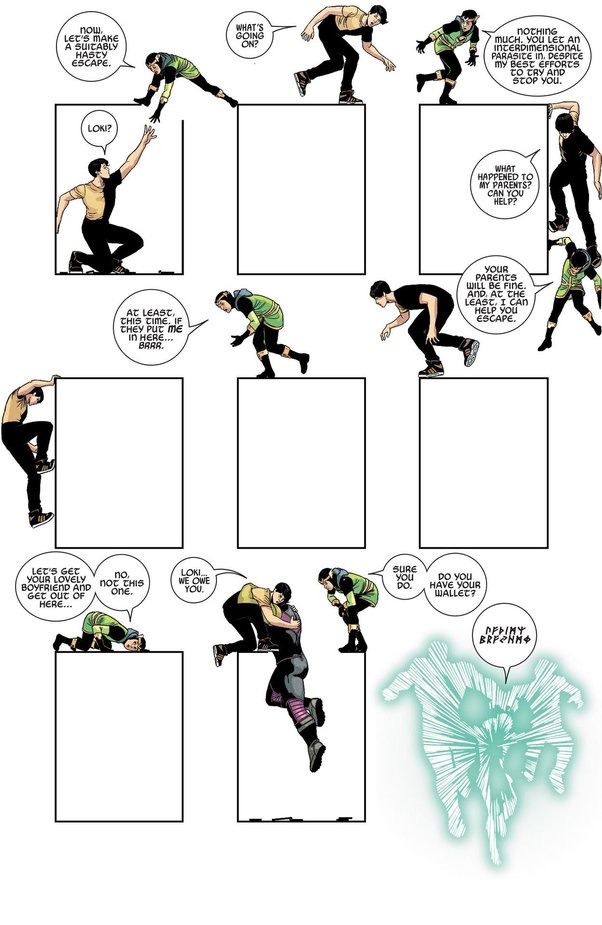
Comic panels are an art form in themselves, contributing significantly to the storytelling experience. Whether through standard layouts, unconventional designs, or iconic examples from renowned comics, the world of comic panels is a dynamic and captivating aspect of the comic book medium.
0 notes
Text
Evaluation:
This is feedback of the overall project- TERM 2:
You need to answer these questions...?
How did you find the project overall?
I really enjoyed this project as it helped me explore different artistic mediums and techniques i otherwise wouldn't have touched.
What did you learn?
I learnt how to sculpt competently and effectively thanks to Kirstie's guidance using what she taught me to create my favourite piece of work so far my dreadful pie during the creation of which I also learned valuable painting skills such as how to use dry brushing tastefully and how different coats of paint effect the finished look. I learnt how to animate using rotoscope even though my project never came to fruition due to technical constraints and the corruption of files can still use and hone the skills josh has taught me. I have learnt how to utilise photoshop for the creation of graphics and how to create larger pieces with them as well as how to trace tastefully without overusing it. I also learnt the skills needed to create a comic in photoshop thanks to Chris's help I was able to develop my initial rough design into my final product. due to some personal feedback from Kirstie I have learnt better techniques for sketching and drawing, now varying and using different shades to achieve a more professional neater style in my sketches and concept art.
What programs have you been using- will you continue using any of these programs and techniques?
the only program I utilised in this project was photoshop, I focused more on physical art during this project rather than digital, I plan on continuing to develop my photoshop skills as I feel there is much I can improve upon with them such as my digital shading skills and porportions.
Are you happy with your outcomes? What went wrong, and how did you fix it?
I am entirely happy with my outcomes bar one, the rotoscope
What would you do differently if you were to do it again?
0 notes
Text
My favourite cults and secret societies,
Our first terms brief is about cults and secret societies set in the 19th century and so I am researching and laying out here my favourite societies and cults, why I personally find them interesting, there beliefs and finally there often swift falls from grace.
1.Heaven’s gate:
Heaven’s Gate was a cult founded by Marshall Applewhite and Bonnie Nettles in the 1970s. They believed in extraterrestrial salvation and that a spacecraft would transport them to a higher plane of existence. Members adhered to strict rules, including celibacy and cutting ties with the outside world. The cult gained notoriety in 1997 when 39 members, including Applewhite, committed mass suicide, believing it would allow them to board the spaceship trailing the Hale-Bopp comet. This tragic event marked the cult’s downfall, highlighting the dangers of extreme beliefs and isolation from society. I really like this cult due to their resolve and tenacity with their two surviving active members still running their website all these years later, a website you can visit at https://www.heavensgate.com/ ( I neither endorse nor condone the actions committed by the members of the heavens gate cult, neither do I support there beliefs.)

2. The Ant Hill Kids:
The Ant Hill Kids cult, led by Roch Thériault in Ontario, Canada, during the 1970s and 1980s, engaged in extreme practices. Thériault claimed to be a prophet, promoting a mix of Christianity and apocalyptic beliefs. Members endured physical and psychological abuse, including amputations as punishment. The cult's downfall came when Thériault murdered one of his followers during a ritual, leading to his arrest in 1989. The trial revealed the cult's gruesome activities, resulting in Thériault's life imprisonment in 1993, marking the end of the Ant Hill Kids cult. Many gruesome and horrific acts where committed by Roch that I won’t detail here but this man was pure evil and I truly wish that if there is something after death for him I pray there is only torment. I don’t like this cult per say but it is of great interest to me due to it displaying what a master manipulator can do when given power and what people will do when they think god has ordained it.

3.The Order of the Pug (Mops-Orden):
This secretive society offer a breath of fresh air from the last two entries, containing not a hint of violence or death however there isn’t much information written online on this organisation, there is a rather good video essay on YouTube detailing its history and activities (https://youtu.be/nWkn2yWU9aU?si=AoG7Jev-Nu102QUp), The order of the pug was a para-Masonic society founded by Roman Catholics in 1738. The constitution of the Order of the Pug allowed women to become members, as long as they were Catholic. The Pug was chosen as a symbol of loyalty, trustworthiness and steadiness. Not only do I personally adore pugs but I admire the society’s willingness to stand against the largest religious figure at the time the pope.
youtube
4. The Unification Church:
The Unification church also known as the “Moonies” due to their founder Sun Myung Moon, where founded in the 50’s. It mixed a lot of Christian ideals and teachings with Moon’s own teachings, Moon proclaimed himself as the messiah and sought to establish a world of peace which one wouldn’t necessarily think given a lot of their doings and beliefs, a breakaway faction within the church even believing Jesus Christ, yes the Jesus Christ son of god, had an AR-15 not like some allegory for one a literal Armalite assault rifle.

2 notes
·
View notes
Text
Culinary oddities
Embarking on a culinary adventure can lead you to discover a world of flavors, some familiar and comforting, while others might push the boundaries of your taste buds. In this exploration, we'll delve into the eccentric realm of weird foods from various corners of the globe, including the intriguing beer can chicken from Vietnam. Additionally, we'll step back in time to the 19th century, a period marked by both culinary innovation and peculiar choices, intertwining this journey with a touch of dark theatricality from the infamous tale of Sweeney Todd.
Weird Foods from Around the World:
1. Beer Can Chicken (Vietnam):
Originating from the vibrant streets of Vietnam, beer can chicken is a culinary spectacle that involves roasting a whole chicken with a can of beer inserted into its cavity. The beer not only imparts a unique flavor but also contributes to the chicken's succulence. This quirky method has gained popularity worldwide, showcasing the inventive and playful nature of Vietnamese cuisine.

2. Hákarl (Iceland):
Venture north to Iceland, and you'll encounter hákarl, a traditional dish featuring fermented shark meat. The preparation involves burying the shark in the ground for several weeks, allowing it to undergo a unique fermentation process. The result is an acquired taste that combines strong ammonia and fish flavors, providing a true Icelandic culinary adventure.
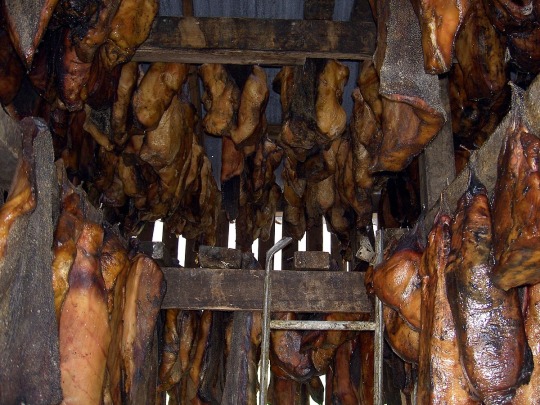
3. Balut (Philippines):
For the more adventurous eaters, the Philippines offers balut – a fertilized duck egg with a partially developed embryo. Often enjoyed with a sprinkle of salt and sometimes vinegar, balut is a street food delicacy that has become an emblem of Filipino gastronomy, despite its unconventional ingredients.

Weird Foods from the 19th Century:
1. Jellied Eels (United Kingdom):
In 19th-century England, jellied eels were a popular working-class dish. Eels were boiled and then set in a savory gelatin made from their own cooking juices. This peculiar concoction reflects the resourcefulness and creativity in making the most of available ingredients during a time of economic challenges.

2. Mock Turtle Soup (Europe and America):
Inspired by Lewis Carroll's "Alice's Adventures in Wonderland," mock turtle soup gained popularity in the 19th century. Typically made from calf's head, this soup mimicked the flavors of traditional turtle soup, offering a ‘whimsical twist’ on the dining table.

Connecting with Sweeney Todd:
As we traverse through these culinary oddities, it's impossible not to draw a parallel with the dark and mysterious tale of Sweeney Todd. The infamous barber and his partner in crime, Mrs. Lovett, turned their customers into meat pies in 19th-century London. The macabre narrative of Sweeney Todd adds a chilling layer to our exploration, emphasizing the stark contrast between the eccentricities of the culinary world and the sinister undertones of Victorian society.

From beer can chicken in the bustling streets of Vietnam to the eerie ambiance of Sweeney Todd's barber shop, our journey through weird foods from around the world and the 19th century unveils a tapestry of flavors and stories. These culinary oddities not only reflect cultural diversity but also showcase the ingenuity and adaptability of humans when it comes to satisfying their gastronomic curiosities.
0 notes





